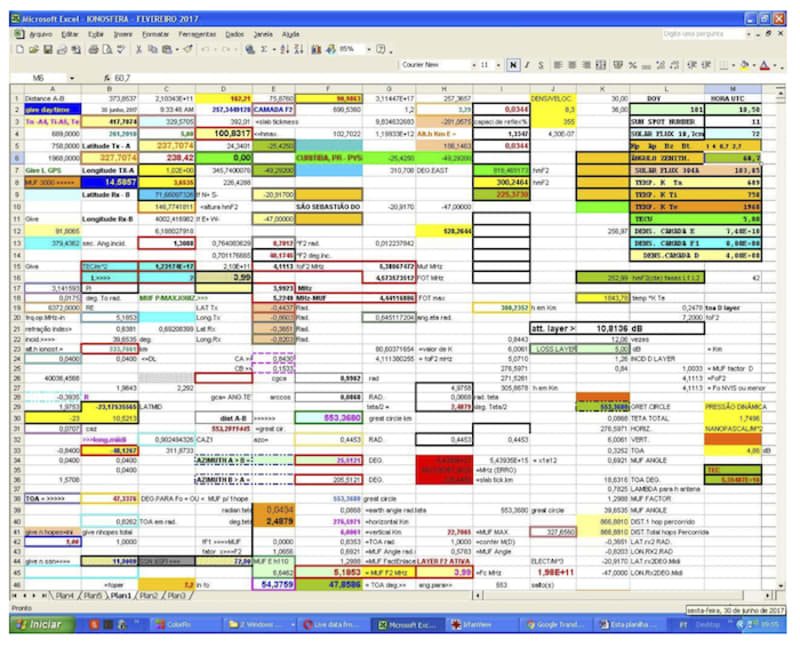This worksheet was developed to calculate the critical frequency of the Ionospheric Layer F2, F1, E, and D. What are these Ionospheric Layers? They are used to make the reflection or return of a wave or radio frequency to the Earth, allowing a radio communication in the frequencies of HF between two points, that is: frequencies of 3 to 30 MegaHertz ..
The differential of this proposal was to present a new way to calculate a certain frequency of Radio to establish a communication between two points with greater security.
The calculations to date do not present reliability and feasibility in the determination of this critical frequency, considering the use of number of sunspots and solar flux index assigned for the desired calculation, its values are rarely defined as a possibility in communications.
With the advent of satellites, radiocommunications seemed to be safer, but this reliability was shaken by several factors that lead to the loss of radiofrequency signals and also losses and errors when crossing the ionospheric layer. GPS satellites used for location suffer from this instability, which for many services is not acceptable, especially for the military. Taking into account these factors, we think of returning to the use of Radio Communications in the HF range, but now with the determination of a more secure frequency using electron density data of the Ionospheric Layer, obtained from the values TEC - Total Electron Content associated to the temperatures Of ions and electrons in the ionospheric layers.
Who can benefit from this? Companies that need to be aware of the timetables for their communications where there is no other means of communication; Armed forces; Public sectors in disaster response; Locations hit by earthquakes and hurricanes, in all places, in the most difficult moments where other media were lost.
This worksheet can be transformed into an executable computer program, favoring inputs and outputs.
Like this entry?
-
About the Entrant
- Name:Miguel Kassis
- Type of entry:individual
- Software used for this entry:EXCEL
- Patent status:none





